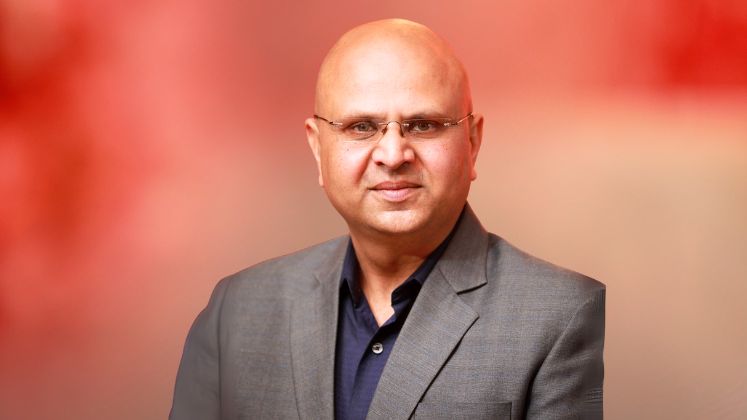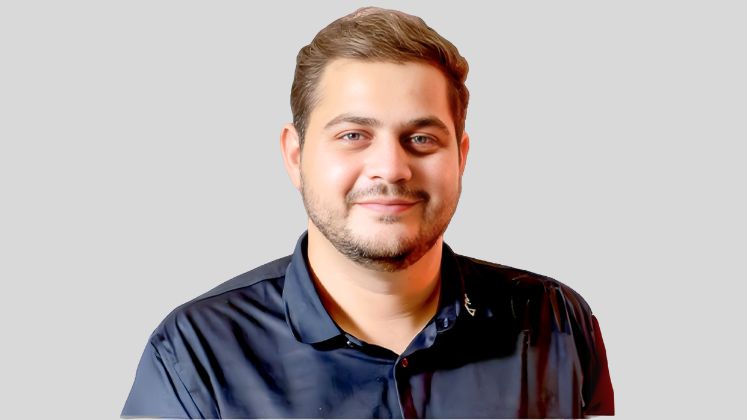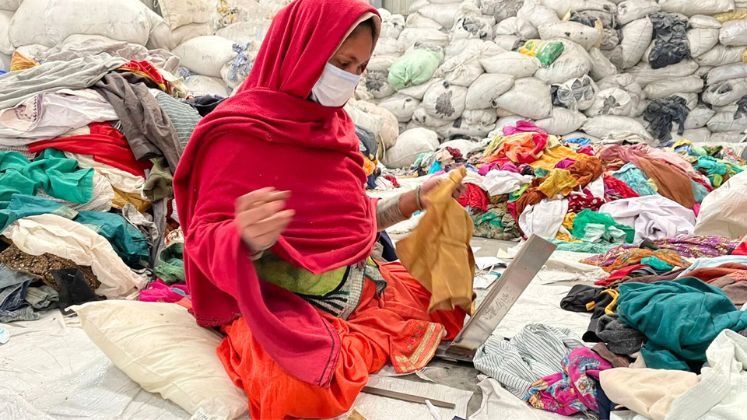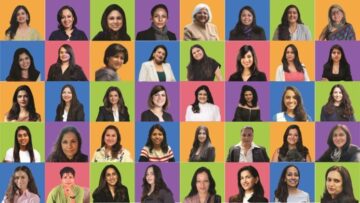What if trash could be transformed into treasure? In Panipat, it’s already happening. For over 50 years, this small town near the national capital has been home to generations of entrepreneurs perfecting the art of textile recycling, processing everything from domestic pre-consumer and post-consumer waste to imported textiles.
Every second, a garbage truck’s worth of clothes ends up in landfills globally— amounting to a staggering 92 million tonnes of textile waste annually. Against this grim backdrop, Panipat’s efforts are crucial in tackling the global textile waste crisis.
Here, second-hand clothes, damaged hosiery and textile scraps, both imported and locally collected, are skillfully transformed into valuable products, fuelling a thriving recycling industry that gives new life to what would otherwise be waste.
With approximately 250 tonnes of textile waste flowing daily, Panipat’s textile industry has an annual turnover of Rs. 50,000 crore (around US $ 6.02 billion), of which around Rs. 12,000 crore (US $ 1.44 billion) is from exports only. The cluster provides direct and indirect employment to about 8-10 lakh workers.
Panipat is home to around more than 2000 registered textile units, most of which are Micro, Small and Medium Enterprises (MSMEs). Not just a local hub, Panipat has been recognised as a Town of Export Excellence under Foreign Trade Policy, especially for its export of high-quality woollen blankets.
Located in Haryana, one of India’s top carpet-home textile producing regions and hosting some apparel factories, Panipat is a key player of the carpet and floor covering industry, with about 200 MSME units driving innovation and growth in this thriving sector.
| Panipat’s textile industry has an annual turnover of Rs. 50,000 crore (around US $ 6.02 billion), of which around Rs. 12,000 crore (US $ 1.44 billion) is from exports. |
Team Apparel Resources recently visited Panipat and found that local manufacturers aren’t just focused on recycling— they are giving a strong thrust to sustainability. From optimising the use of natural resources to focusing on vertical integration, Panipat’s manufacturers are setting new standards. There has also been a greater focus on certifications and a shift towards finer count yarns. Here’s how they are planning to grow and survive.
Recycling Textiles into Trendy Products
A good example of transforming textile waste into valuable products is Aadi Sustainability Solutions, a leading textile recycler. The company handles 15,000 tonnes of material every month, turning them into finished garments. According to Parvinder Singh, Director, Aadi Sustainability Solutions, the company turns recycled fibres into denim, which are then sent to denim mills. The mills turn these fibres into fabrics, which are sent back to Aadi Sustainability Solutions. The company uses these fabrics to create a variety of denim clothing, including menswear, womenswear and kidswear. Every year, it produces 6-7 lakh denim pieces. Its buyers include domestic brands like Reliance, Ed-a-Mamma, Monte Carlo, Madame and WROGN, as well as international buyers like the Landmark Group in the GCC region.

Whereas, Gagan Kansal, Director, Kay Gee Enterprises, explained that his company recycles post-consumer textile waste into fibres, which are then spun into yarn with counts ranging from NE 2s to 20s. This includes single, double and multi-fold yarns, available in raw white and various colours. The process is carried out using Open End Spinning Technology at their own manufacturing facility. The yarns are then transported locally and exported to countries like Africa, Saudi Arabia, Mexico and Europe.

Previously, about 80 per cent – 90 per cent of recycled yarn production were into 4-6 count, but now nearly 50 per cent of the production is for 10 count or even higher. Some companies are even pushing the limits, producing yarns with counts higher than NE 20s.
Similarly, Kushagra Bansal, Managing Director, KS Spinning, mentioned that it blends recycled cotton with polyester for added strength, spinning yarns that meet specific requirements while simplifying the overall process. The company is now investing in R&D to develop finer yarns and expand its capabilities.
The company produces 40,000 metric tonnes of recycled yarn annually, using 28,000 metric tonnes of garment waste and 15,000 metric tonnes of recycled fibres made from over 60 million PET bottles. It supplies 100 per cent recycled yarns in cotton/polyester blends to 29 plus countries across five continents.
Its global product development team, including freelancers, collaborates with retailers to create recycled yarn tailored to specific product needs.
“By acting as development partners rather than mere suppliers, we differentiate ourselves in the market. This collaborative approach ensures buyers prioritise us, as we align with their specific needs,” stated Kushagra.

Harshit Kakkar, Director, Kakkar Spinning Mills, explained that their sister company, HR Overseas, specialises in cotton-blended recycled yarn, knitting yarn, weaving yarn, yarn for socks and home textile products like bathmats. Kakkar Spinning Mills also provides textile waste recycling machines in India and exports them to Nepal, Bangladesh and Sri Lanka.
Harshit added a new state-of-the-art facility just two years ago, which produces around 40 tonnes of fibre and 25 tonnes of yarn every day.
Manufacturers Eye New Growth Paths and Pursue Quality
Manufacturers are also looking for new ways to grow. For instance, Gagan pointed out that Kay Gee Enterprises has also transitioned from a product-based recycling approach to offering service-based solutions, such as recycling specific items like national flags after Independence Day. “The goal is to provide a solution for waste, no matter the textile product, and prevent it from ending up in landfills,” he said. Gagan highlighted that by collaborating with Kay Gee Enterprises, businesses can fulfil their CSR goals and improve their ESG performance. The companies are also keen to work with international retailers to develop new products.
“We have a great chance to attract new international buyers, especially those focused on sustainability but sourcing less from India,” added Harshit.
The manufacturers are also focused on improving quality. For instance, Kushagra explained that KS Spinning aims to avoid relying on dyeing processes for yarn production. Typically, recycling viscose or other cellulosic fibres involves chemical processes that produce a grayish fibre, which then needs dyeing. However, KS Spinning focuses on extracting coloured cotton directly from recycled waste, eliminating the need for dyeing entirely. This process uses coloured cotton waste to produce dyed yarn in desired colours, counts and applications, making the entire operation more sustainable.
Harshit also highlighted that Kakkar Spinning Mills follows an eco-friendly approach by not using water or chemicals in their production. “Everything we produce is made from fabric to yarn. We don’t bleach or dye it; we just convert colour to colour, which helps save on dyeing costs. Even the fibre waste from factories is used to make cardboard,” he explained.
“In recent years, certifications like GRS and RCS have gained more attention and many brands are now focusing on certified recycled products. The demand is growing and more companies in Panipat’s recycling industry are working in a more organised way and improving themselves,” observed Harshit.
Parvinder from Aadi Sustainability Solutions also emphasised that being certified with GRS, GOTS, OEKO-TEX, ISO 9000 and other certifications has helped their company. He highlighted that the company’s various certifications, including GRS, GOTS, OEKO-TEX and ISO 9000, have made their products more attractive to buyers.
With global demand for sustainable textiles growing at 20 per cent a year, Parvinder, also the Co-founder of the Global Alliance For Textiles Sustainability Council (GATS), sees a US $ 15 billion export opportunity for India by 2030.
These efforts are in line with upcoming regulations, like the European Union’s Circular Economy Action Plan and India’s Extended Producer Responsibility (EPR) framework, which will require mandatory recycled content, limit single-use products and provide consumers with clearer information on product durability.
Mastering the Art of Sorting
The recycling process begins with careful sorting by colour, mainly done by women. Clothes that are still in good condition are repaired and sold in flea markets. The rest are turned into recycled yarn through a detailed process.However, many companies are now using machines for sorting as well.
“We developed a semi-automatic system in-house. We also use NIR scanners (Near Infrared), but they have limitations. They have trouble with colour differences, especially with dark colours and can make mistakes when there are more than two blends,” said Parvinder.
He added, “Our conveyor system uses UV lights, which work very well for us. We’ve placed lights with different spectrums, from 1000 lumens to 4000 lumens, all the way to the UV range. These lights help us complete about 60 per cent – 70 per cent of the work. Synthetic materials like lycra shine differently under UV light, making them easier to spot.”
Agreeing with this, Gagan said, “We sort fabrics manually by composition and colour. Although automatic scanners are used, most sorting is still done by hand.” The company also offers textile recycling services to a wide range of customers, including schools, hospitals, hotels and manufacturing companies. It has built strong partnerships over the years, helping organisations recycle textiles like uniforms and retail leftovers.
In recycling, unlike other businesses, the input varies because waste content changes, but companies work hard to ensure consistent output quality. To overcome the challenge of unstable input supply of waste material and to get quality waste material, Panipat’s companies are planning more control over waste procurement. For this, they are associating directly with the large suppliers of such material.
Harshit explained, “Currently, most of our raw material comes from the unorganised sector, while we and most of our clients are organised. Sourcing raw materials in an organised way will add more value for us and our clients.”
This approach will also make the supply chain more traceable and compliant with chemical standards. The cluster is also facing several challenges, chief among them being limited access to capital and technology.
“Most recycling is handled by MSMEs, which lack resources for experimentation. Even larger companies find the costs of innovation too high to manage alone,” lamented Gagan.
Kushagra highlighted that technology used to last around 10 years, but now, to keep up with market demands, technology upgrades are needed every three to four years. This leads to extra costs, especially in spinning, which is capital-intensive. However, Kushagra stated, “It also positions us as a forward-thinking company ready to adapt to changing global needs.” Local competition is growing and most mills are producing similar products, lacking variety. Experts also pointed out that brands and manufacturers need to focus on making products more recycling-friendly.
(With inputs from Dheeraj Tagra)








